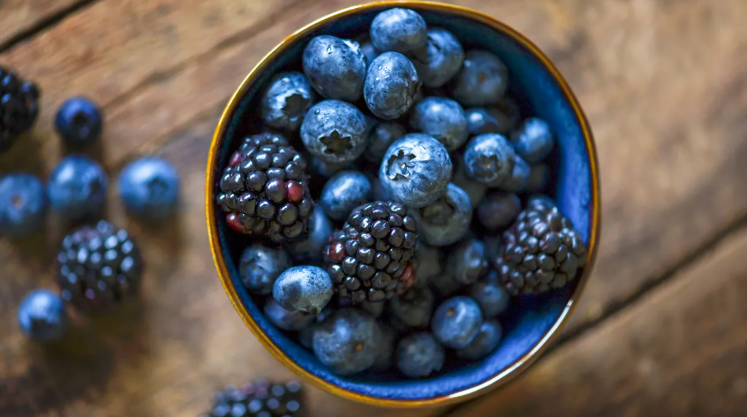Do You Know Why ‘Blue Food’ Is the New Health Superfood Trend in 2025
From blue spirulina to butterfly pea tea and blueberry smoothies — 2025 is seeing a massive rise in “Blue Food” as the new superfood category. Packed with antioxidants, brain-boosting properties, and stunning natural color, blue foods are taking over social media, cafes, and health diets worldwide.
KNOWLEDGE & EDUCATION
Do You Know Team
8/16/20253 min read


Every year, wellness trends come and go — keto, chia seeds, matcha — but 2025 has introduced a new superstar in the health and nutrition world: Blue Food. From Instagram-friendly blue smoothie bowls to spirulina latte to bright indigo rice — everything blue is suddenly trending in health cafes, grocery stores, and nutrition plans.
What exactly is Blue Food? Why are nutritionists, chefs, influencers, and even scientists calling it the superfood of 2025? And is it even healthy or just hype?
Let’s explore why “Blue Food” is the hottest color on your plate this year.
1. What is ‘Blue Food’?
Blue food refers to naturally blue-colored edible items like:
Blueberries
Blue spirulina (phycocyanin)
Butterfly pea flower tea
Blue cheese
Blue corn
Blue potatoes
Blue-green algae from oceans
These naturally blue foods often get their color from anthocyanins and phycocyanin — powerful natural antioxidants that are good for health and used as natural food coloring in smoothies, latte art, energy bars, etc.
2. The Scientific Reason: Antioxidants & Anti-Aging
Most blue foods are rich in anthocyanins, which help reduce inflammation, improve brain function, and fight cancer-causing free radicals. That’s why blueberries have been called “brain berries.”
Phycocyanin, the pigment in blue spirulina, is a natural detoxifier and immune booster.
The color blue = more antioxidants = anti-aging benefits.
3. Instagram & Aesthetic Food Culture
Blue food looks beautiful in photos. Blue smoothie bowls, unicorn lattes, mermaid toast — all gone viral. Influencers and cafes prefer blue because it stands out on social media. Butterfly pea tea changes color when lemon is added. Millennials love this visual magic!
4. Rising Popularity of Blue Spirulina
Blue spirulina powder is made from blue algae (without the fishy taste of regular spirulina). It turns your food bright sky blue or turquoise.
Health benefits include:
Protein-rich
Vegan source of iron
Boosting immunity
It’s added to shakes, ice creams, energy balls, yogurt, pancakes and more.
5. Brain Health & Mental Focus
Studies show that blue food like blueberries support memory retention and mental clarity. In 2025, with digital exhaustion and AI-driven work stress, people want brain-food. Blue food = brain booster = better focus.
6. Butterfly Pea Flower Tea Craze
In India and Southeast Asia, Butterfly Pea flower has been used traditionally. In 2025, it’s globally a trend:
Butterfly tea latte (blue)
Lemon + Blue tea (turns purple)
Used in cocktails, cosmetics, desserts
Known to improve skin, hair, eyesight, and reduce stress. Cafes in Delhi, Mumbai, Bengaluru now sell blue tea proudly.
7. Athletes & Fitness Enthusiasts Are Using it
Fitness trainers recommend blue spirulina smoothies post-workout. It gives natural energy, aids muscle recovery, and supports metabolism. Athletes prefer natural antioxidants over artificial supplements.
8. Indian Adoption & Ayurveda Angle
Even Indian health brands have launched blue spirulina powders, blue pea tea sachets, and blue chia puddings. Ayurveda practitioners claim blue pigment helps with pitta imbalance, calming the body. Stores like Patanjali, Kapiva, Oziva now carry blue superfoods.
9. Environmental & Ocean-Based Superfoods
Blue foods also refer to sustainable ocean-based proteins like algae, seaweed, kelp chips, which are high in Omega-3 and low environmental impact. FAO (UN) even released a report recommending “Blue foods” for sustainable food security.
10. Children Love the Color, Parents Love the Nutrition
Parents struggle to feed healthy food to kids. But a blue pancake or blue ice-cream made from spirulina or blueberry? Kids love the color, parents love the nutrients. This is making blue food popular in school lunches.
FAQs
Q1: Is blue food safe to eat every day?
Yes, natural blue foods like blueberries, blue spirulina, or butterfly pea are safe and very healthy. But artificial blue coloring should be avoided.
Q2: Is Blue Spirulina different from regular spirulina?
Yes. Blue spirulina is just the blue pigment (phycocyanin) extracted from spirulina — it has no smell or fishy taste, unlike green spirulina.
Q3: Where can I buy blue food powders?
Online health stores, Amazon, organic brands and even some supermarkets sell blue spirulina and butterfly pea tea in India and globally.
Q4: Can diabetic or heart patients consume blue food?
Blueberries, pea flower tea, blue corn are safe for diabetic diets and heart health. However, always consult a doctor for personal dietary needs.
Q5: Is this a long-term trend or just social media hype?
Nutritionists believe blue foods will remain popular because of real health benefits, especially mental health, anti-aging and natural color use.
Conclusion
Blue food is not just a fancy color trend — it represents a shift toward natural, antioxidant-rich superfoods that improve brain health, immunity, and beauty from within. In 2025, people are tired of processed junk. They want clean, aesthetic, functional foods — and blue food checks all the boxes.
Whether it's a blueberry smoothie, butterfly pea tea, or blue spirulina protein bowl — this delicious new health trend is here to stay. And yes, it also looks amazing in Instagram photos!
#BlueFood #Superfood2025 #DoYouKnow #BlueSpirulina #ButterflyPeaTea #HealthTrends2025 #Antioxidants #NaturalWellness #HealthyLifestyle #FoodTrend
Knowledge
Empowering minds with reliable educational content daily.
Newsletter Signup
© 2025 DoYouKnow. All rights reserved.
Stay Ahead of the Trends – Join Our Newsletter
